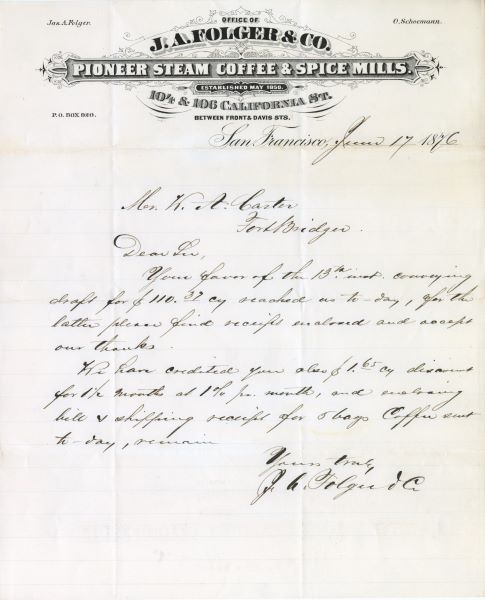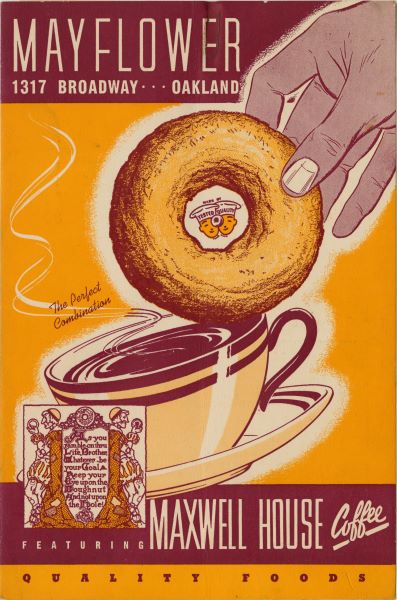The First Wave of Coffee
Contemporary American coffee culture and history is often categorized by three “waves” to describe the different periods of change and transition in the nation’s coffee roasting, brewing, and consumption patterns.
The “first wave” of coffee describes the period in the late 19th to mid-20th century that witnessed the rise of “commodity coffee.” Large companies popularized brands of coffee such as Arbuckle, Folgers, Maxwell House, Chase & Sanborn, and Hills Bros. Within the first two decades of the 20th century, American consumers shifted from home roasting and grinding to buying pre-packaged, brand-name coffee, which comprised 85 percent of coffee purchases.
By 1920, the United States imported more than half of the world’s coffee supply, even though the coffee beans’ origins were obscured in the coffee branding and advertising. However, 75 percent of the coffee at this time came from Brazil.
By 1940, 98 percent of U.S. households reported consuming coffee, a habit that was bolstered by Prohibition, which helped make coffee a more socially acceptable beverage in public settings.


Menu Collection, D-678
Coffee Brewing and Roasting
In the 18th century, coffee advocates urged consumers not to drink coffee that had been boiled directly in water, which resulted in a bitter brew. Many advocated for “drip” coffee, where boiling water was poured over finely-ground coffee packed in an upper chamber of a pot. The Rumford coffee pot popularized this method, which was described in more detail in Rumford’s essay, “Excellent Qualities of Coffee and the Art of Making it in the Highest Perfection” (1812).
In the United States, the Old Dominion coffee pot (patented in 1856 and widely distributed by 1859) functioned as an early percolator and refined how Americans brewed coffee. While advertisements claimed that the pot prevented the escape of aroma and flavor, the pot’s brewed coffee helped establish the thinner-bodied, bitter-tasting beverage still widely consumed.
In 1864, Jabez Burns invented a self-emptying coffee roaster that reduced roasting and grinding time, thereby lowering the price difference between green and roasted coffee in the marketplace. John Arbuckle bought a Burns roaster, which rapidly transformed his company’s sales of pre-roasted coffee in sealed paper bags.